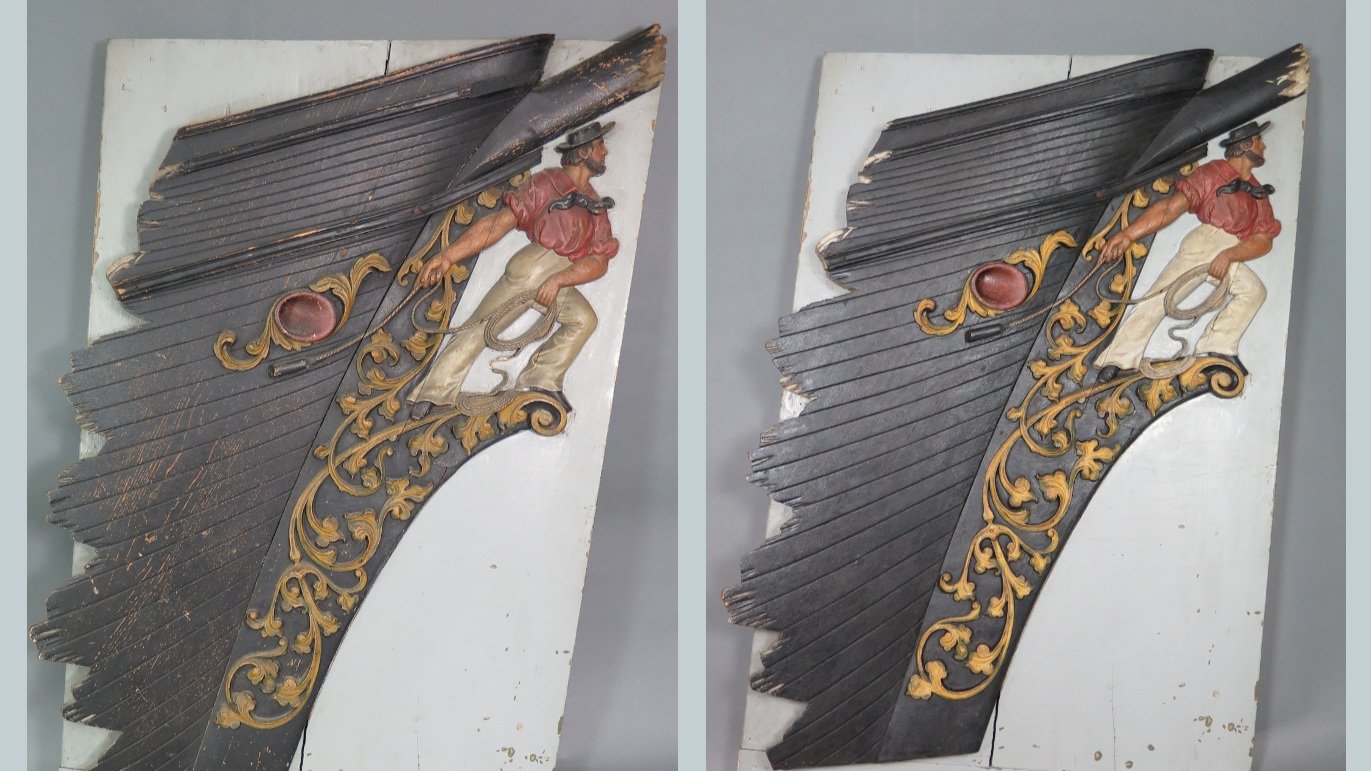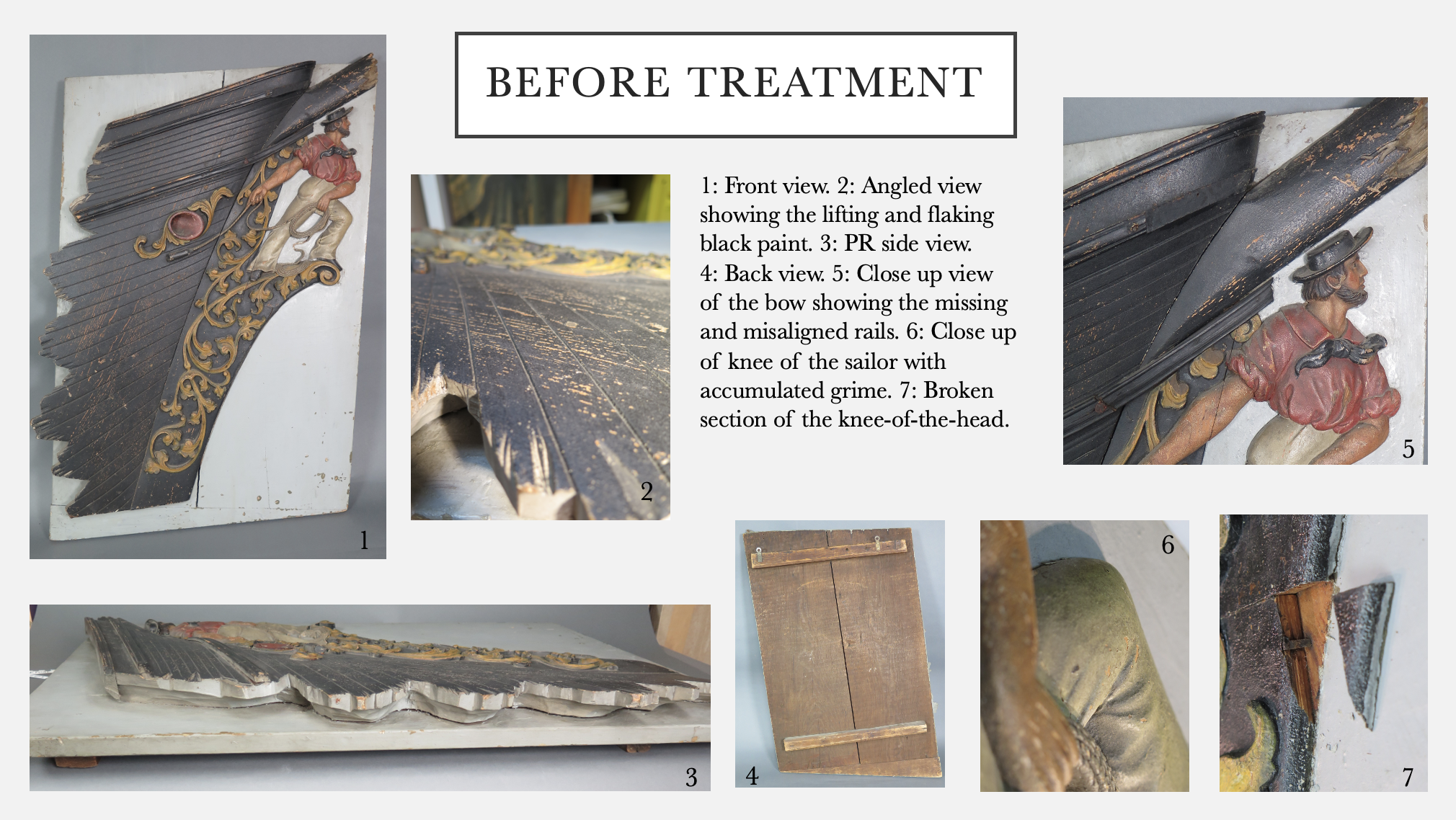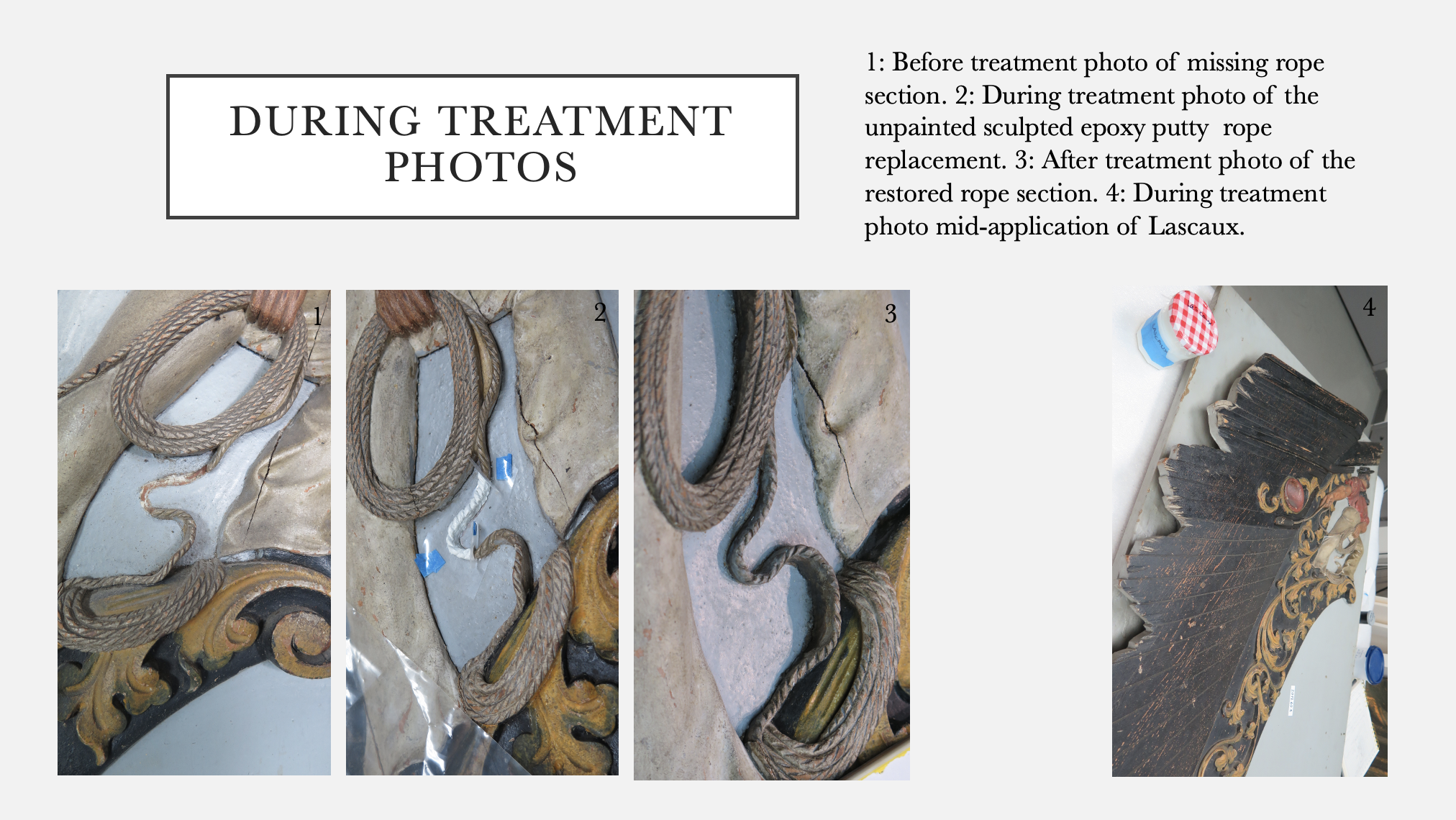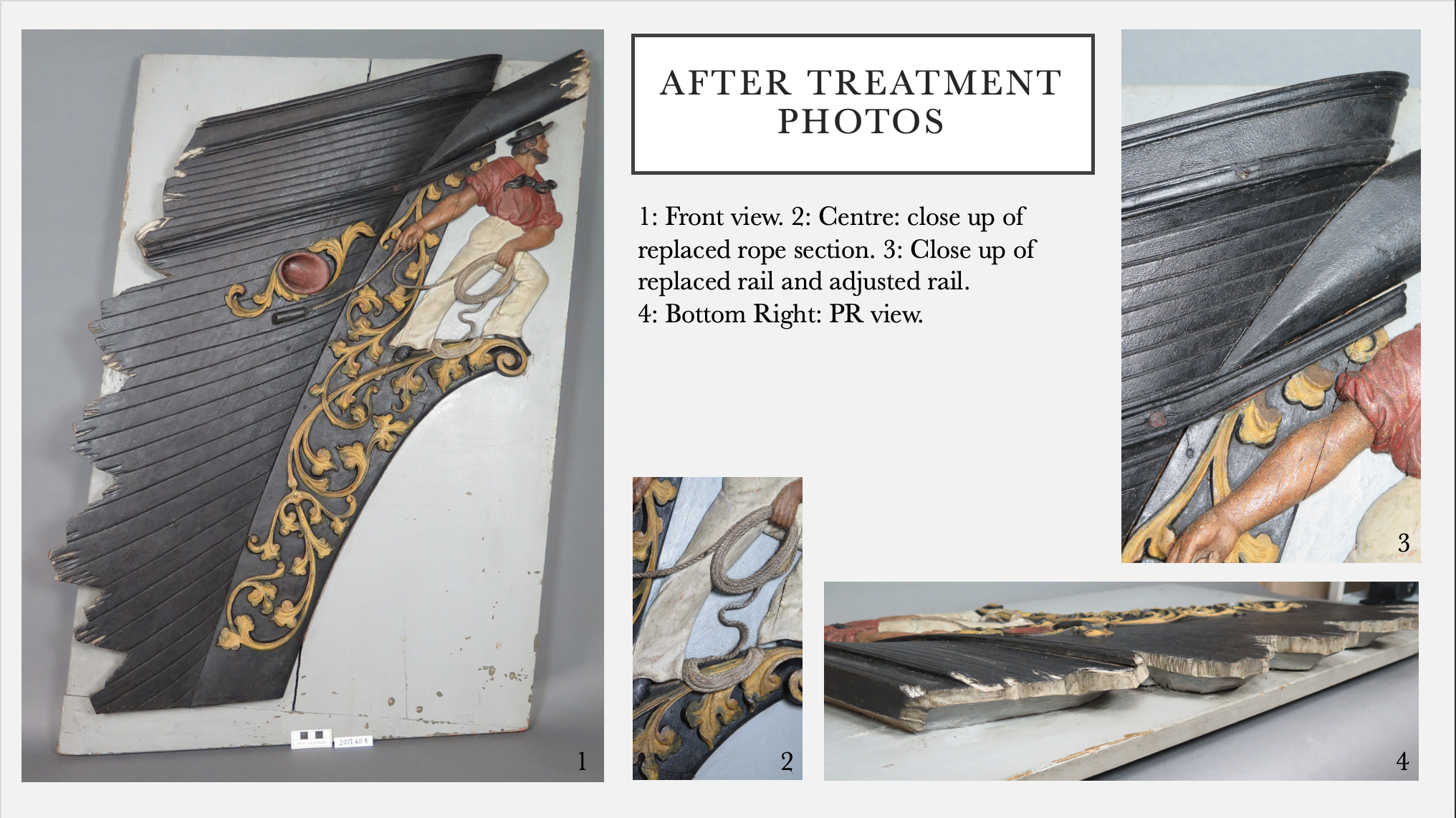
Ship Carver Sign
A painted wooden shop sign, likely for a ship figurehead carver. The sign base is constructed using two large boards with two smaller boards on the top and bottom with three bracing boards in the back. The decoration is the bow of a ship with a sailor figure head. The ship is mostly black with yellow filigree designs up the knee-of-the-head and off the hawse hole. The sailor is dressed in ivory pants with a red top, black kerchief and black hat. The sign base is a grey-blue-green colour. Chips in the paint show that the sign base may have originally started as an ivory colour, followed by an olive green after which it was painted the grey colour. The entire surface was likely varnished at some point causing discoloration and cracking to the paint.



Condition
•The surface is dusty and grimy with the top layer of varnish discoloured.
• The carved section (ships bow, figure head and bow sprit) has lifting paint, especially the black, ivory and red sections.
•A small section from the knee-of-the-head is loose as are a few sections of the yellow filigree decorations.
•The carved rope held by the sailor is missing a small section.
There is a decorative rail section missing from the bow above the bowsprit and a repaired or replaced section below the bowsprit
Treatment
•The surface was dusted with a brush to remove as much dust as possible without removing the lifting paint.
•The lifting paint was consolidated with Lascaux 4176. The consolidant was applied with a brush and, after waiting for a short time, (depending on the paint – time established by testing) the lifting flakes were set down with a tacking iron using silicone release Mylar as a barrier, except for the ivory and red paints which are heat sensitive.
• Excessive shine from the Lascaux was reduced using cotton swabs dampened with a 50/50 solution of isopropyl alcohol and distilled water. This combination had the added benefit of removing much of the discoloured layer of varnish and/or grime, revealing the intended original paint colours.
•Losses in the paint were filled using acrylic paint.
•Loss to the rope was replaced using sculpted epoxy putty (Apoxie Sculpt in cream colour), adhered in place using Paraloid B72 20% in acetone and painted to match. The loose pieces from the filigree and cut water were secured using Paraloid B72 20% in acetone.
•The missing rail above the bowsprit was replaced with a carved piece of balsa wood and painted with acrylic paint to match. The misaligned section was filled in and shaped using Paraloid B72 20% in acetone with glass microballoons and painted with acrylic paint to match.